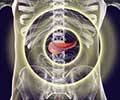Clinical manifestations and diagnosis
The international Headache
Society diagnostic criteria for migraine without aura are as follows :
Headache attacks last 4 to 72 hours
• Pulsating quality
• Moderate or severe intensity
• Aggravation
During headache at least one of the following occurs:
• Photophobia and phonophobia
At least five attacks occur fulfilling the above criteria.
History, physical examination, and neurologic examination do not suggest any underlying organic disease.
The diagnostic criteria for migraine with aura suggest that at least three of the following four characteristics are present:
One or more fully reversible aura symptoms indicates focal cerebral cortical and/or brainstem dysfunction.
-
At least one aura symptom develops gradually over more than four minutes.
No aura symptom lasts more than 60 minutes (duration proportionally increases if more than one aura symptom is present).
Headache follows the aura with a free interval of less than 60 minutes and may begin before or with the aura; the headache usually lasts four to 72 hours but may be absent (aura without headache).
At least five attacks occur that fulfill the above criteria, and the history, physical, and neurologic examination do not suggest any underlying organic disease.
Auras are usually visual, but may involve other senses or occasionally cause motor or speech deficits. They represent progressive neurologic deficits with subsequent complete recovery. The phenomenon of prodrome should be separated from the aura of migraine; a prodrome can last from hours to days and is usually associated with changes in mood and appetite and with fluid retention.
Migraine commonly begins early in the morning but can occur at any time.
Nocturnal headaches, which awaken the patient from sleep, characteristically occur with cluster headaches but have also been reported with migraine. However, in a patient with the recent onset of nocturnal headaches, brain tumor and glaucoma should be carefully excluded by thorough neurologic and ophthalmologic evaluation, with appropriate imaging studies, if indicated.
The headache is lateralized during severe migraine attacks in 60 to 70 percent of patients; bifrontal or global headache occurs in up to 30 percent. Occasionally other locations are described, including bioccipital headaches. The pain is usually gradual in onset, following a crescendo pattern with gradual but complete resolution. The headache is usually dull, deep, and steady when mild to moderate; it becomes throbbing or pulsatile when severe. Migraine headaches are worsened by rapid head motion, sneezing, straining, constant motion, or physical exertion, thereby leading many migraine sufferers to seek relief by lying down in a darkened, quiet room.
Complicated migraine
Complicated migraine is characterized by attacks in which neurologic symptoms last for the entire headache, for several days or weeks, or in some cases leave a permanent neurologic deficit.
Ophthalmoplegic migraine is rare and most often seen in children and young adults.
It may affect the third (most common), fourth, or sixth cranial nerves.
Hemiplegic migraine is characterized by motor and sensory symptoms that are unilateral and last longer than the headache itself. Complete recovery may take weeks; permanent weakness can occur after multiple attacks.
Basilar artery migraine predominantly affects young women and children. Symptoms may include any combination of vertigo, diplopia, tinnitus, ataxia, and altered consciousness. Visual symptoms may be difficult to distinguish from a classic migraine aura, although basilar artery migraine is more likely to affect both visual fields.
Diagnosis
The diagnosis of migraine is clinical, based upon a history and physical examination consistent with the criteria listed above. The neurologic examination should be normal. Indications for brain imaging included and discussed in (DFH-GEN-2) in Section I.
Precipitating factors
Migraine headaches may be precipitated by stress, worry, menstruation, oral contraceptives, excess exertion, fatigue, lack of sleep, hunger, head trauma, and certain foods and beverages containing nitrites, glutamate, aspartate, tyramine, and possibly other unidentified chemicals (See Table 2).
Certain medications and compounds may also precipitate a migraine attack, including excessive vitamin A, nitroglycerin, histamine, reserpine, estrogens, corticosteroid withdrawal, hydralazine, perfumes, smoke, and certain organic solvents with pungent odors.




